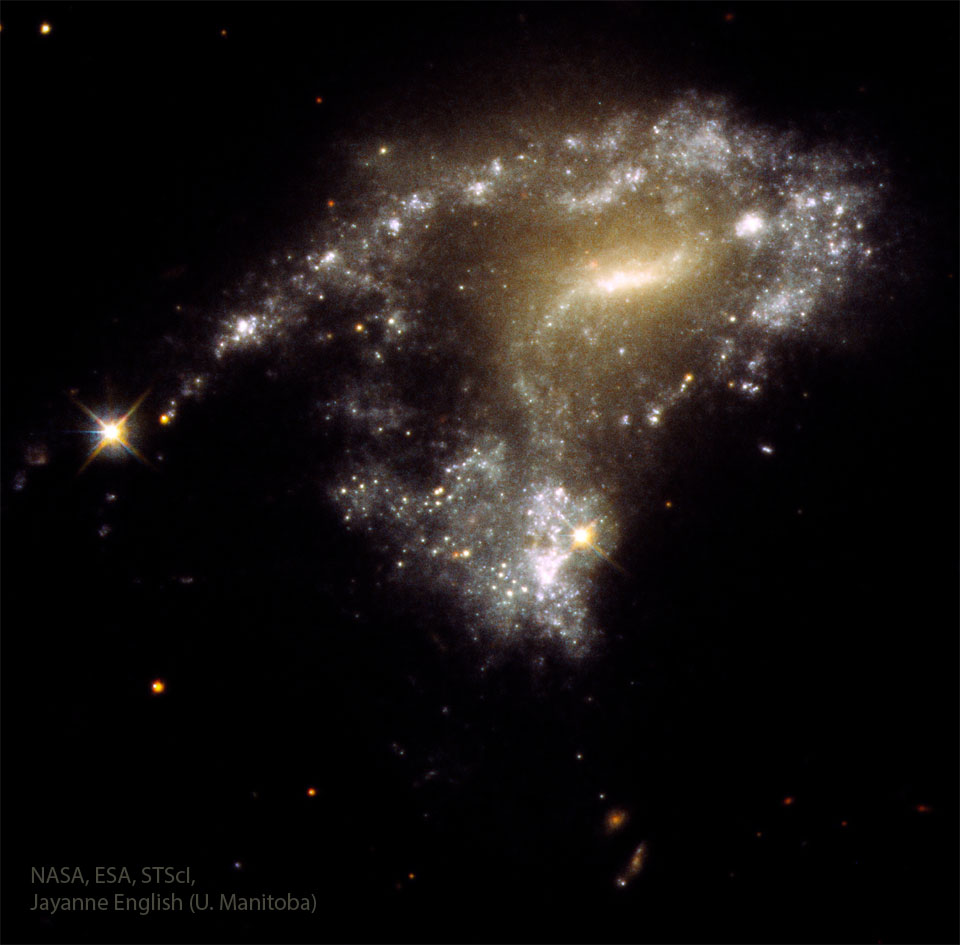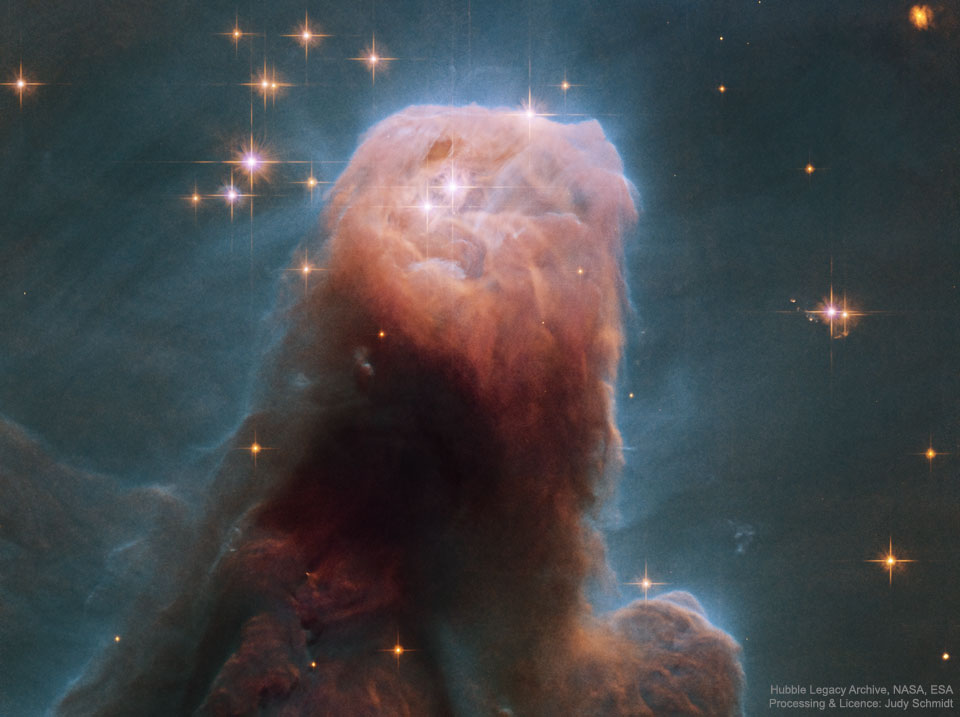哈勃望远镜拍摄的木星紫外光影像
The planet Jupiter appears full frame in apparent colors of a variety of blues and some pink bands. The Great Red Spot is visible on the lower left as a dark spot. Jupiter’s Moon Ganymede is visible on the upper left. Please see the explanation for more detailed information.
木星以各种蓝色和一些粉色条纹的色彩呈现在画面中央。大红斑位于左下方,呈现为一个暗斑。木卫三(盖尼米德)位于左上方。有关更多详细信息,请参阅说明。










